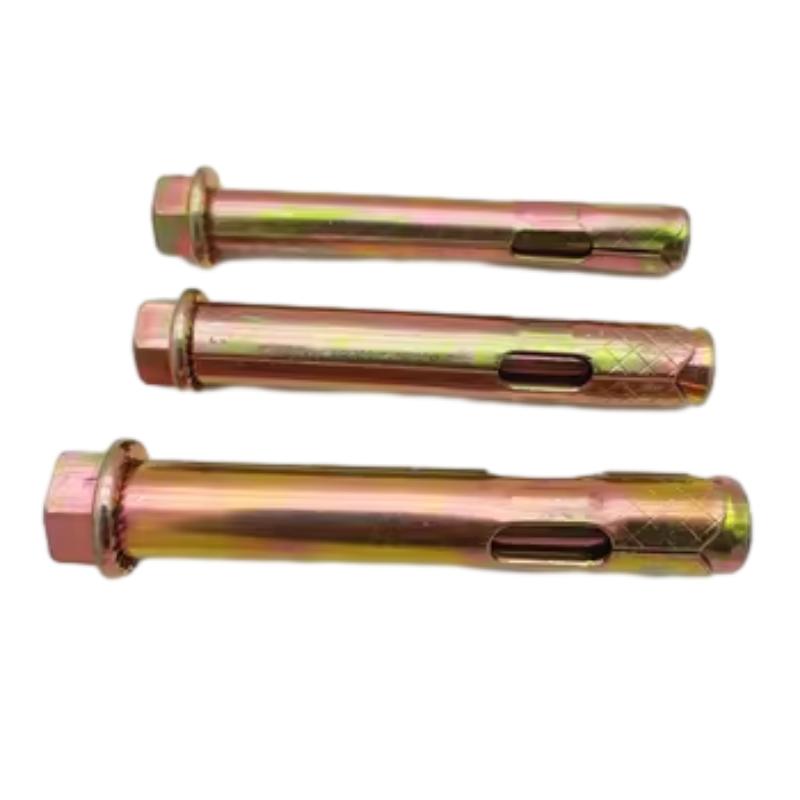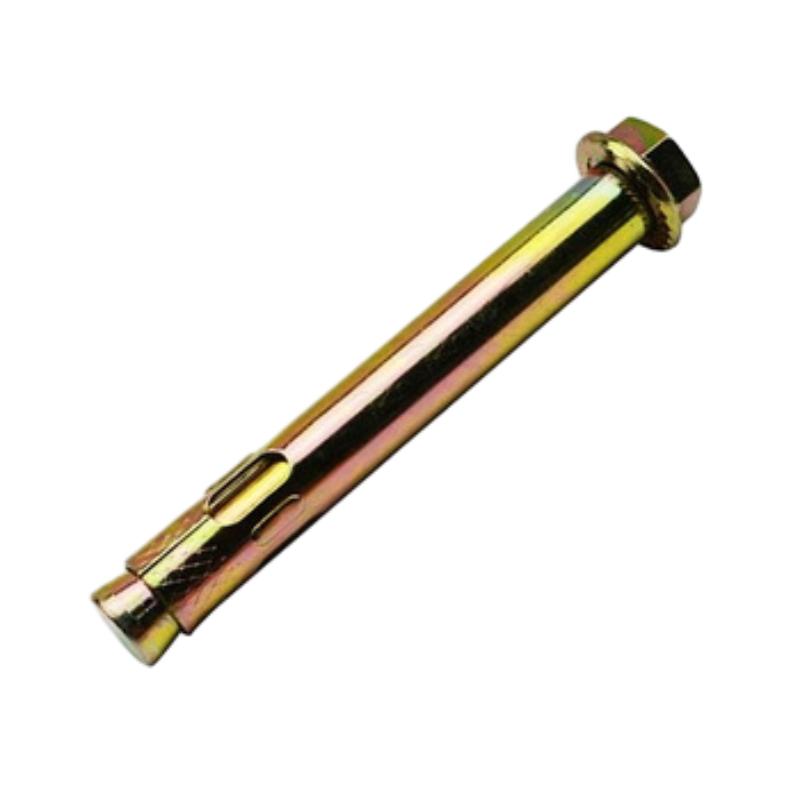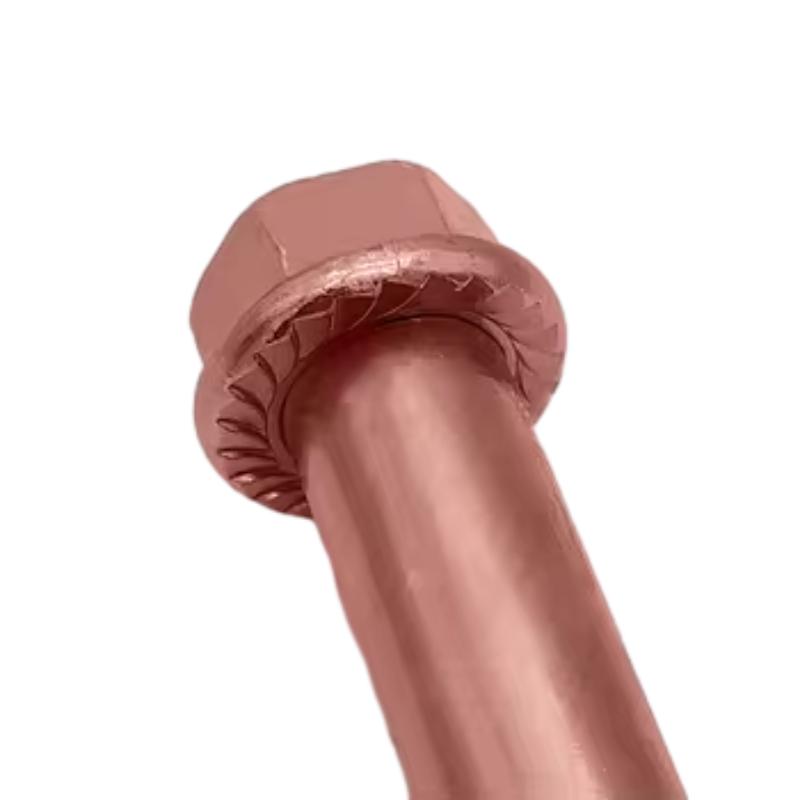Jul . 22, 2025 02:01 Back to list
Hex Head Sleeve Anchors | Durable Concrete Fastening
HEBEI YUETONG FASTENERS MANUFACTURING CO., LTD
Global Leader in High-Quality Fastening Solutions Since 2003
Hex head sleeve anchors have become indispensable components in modern construction, offering superior performance in concrete fastening applications. This technical guide explores the engineering principles, material science, and industry applications that make these fasteners essential for structural integrity.
Understanding Sleeve Anchor Technology
Sleeve anchors are mechanical expansion anchors designed for secure fastening in concrete and masonry. When examining hex head sleeve anchor systems specifically, we're referring to anchors that combine a head bolt, expansion tube, flat washer, expansion nut, and hex nut in an efficient mechanical assembly.
The fundamental engineering principle behind hex sleeve anchors involves expansion force generation. When torque is applied to the hex sleeve nut, it draws the bolt upward, causing the expansion sleeve to compress against the walls of the pre-drilled hole. This creates significant friction forces that resist both tension (pull-out) and shear loading conditions.




The unique geometry of the hex head sleeve provides several mechanical advantages over traditional anchor designs. The hexagonal shape allows for significantly higher torque application during installation, translating to more reliable expansion force. Additionally, the recessed hex design minimizes protrusion, making these anchors ideal for applications requiring flush or low-profile fastening.
Industry Applications of Hex Sleeve Anchors
- Structural Steel Connections: Securing beams, columns, and embed plates to concrete foundations
- Facade Systems: Anchoring curtain walls and exterior cladding systems
- Heavy Machinery Installation: Bolt-down applications for manufacturing equipment
- Infrastructure Projects: Bridge construction, highway signage, and seismic retrofitting
- Commercial Construction: Securing interior fixtures, railing systems, and partition walls
Technical Specifications
The performance characteristics of sleeve anchor hex bolt systems vary significantly by size, material, and design. Below are detailed technical specifications for various hex head sleeve anchor configurations:
| Diameter | Min. Embedment (in) | Tensile Strength (lbs) | Shear Strength (lbs) | Torque (ft-lb) | Hole Diameter (in) | Material |
|---|---|---|---|---|---|---|
| 1/4" | 1-1/4 | 1,200 | 1,800 | 10 | 1/4 | Carbon Steel |
| 3/8" | 1-3/4 | 2,500 | 3,750 | 25 | 3/8 | Carbon Steel |
| 1/2" | 2-1/4 | 4,100 | 6,150 | 40 | 1/2 | Stainless Steel |
| 5/8" | 3 | 6,500 | 9,750 | 60 | 5/8 | Carbon Steel |
| 3/4" | 4-1/4 | 9,400 | 14,100 | 85 | 3/4 | Stainless Steel |
These specifications are critical for engineers designing with 3 4 sleeve anchor and 5 8 sleeve anchor sizes, where structural requirements become more demanding. Proper hole size is especially important - undersized holes prevent proper expansion while oversized holes reduce friction significantly.
Material Science Behind Sleeve Anchors
Material selection dramatically influences the performance characteristics of sleeve anchor hex nut systems. The primary options include:
Carbon Steel: The most economical solution offering good tensile strength. Yellow zinc plating provides corrosion resistance suitable for indoor applications. With tensile strengths ranging from 60,000 to 100,000 psi, these anchors meet ASTM F1554 specifications.
Stainless Steel (304 & 316 grades): Essential for applications requiring maximum corrosion resistance. The 316 grade offers superior chloride resistance, making it ideal for marine environments and chemical exposure. Mechanical properties differ slightly from carbon steel, with tensile strengths between 70,000-90,000 psi.
Recent material innovations include:
- Duplex stainless steel options offering 2X strength compared to standard grades
- Epoxy-coated anchors providing enhanced chemical resistance
- High-strength alloy steel anchors meeting A490 specifications
Premium Hex Head Sleeve Anchor Solutions
Explore our flagship product: Carbon Steel Yellow Zinc Sleeve Anchor
Combines head bolt, expansion tube, flat washer, expansion nut and hex nut for exceptional concrete anchoring performance
Installation Best Practices
Correct installation of hex head sleeve anchors is critical for achieving published performance values. Follow these engineering guidelines:
1. Drilling Precautions:
- Always employ hammer drill setting for concrete substrates
- Maintain perpendicular alignment to avoid ovalized holes
- Clear debris from hole using compressed air or specialized brushes
2. Anchor Insertion:
- Insert assembled anchor through fixture into pre-drilled hole
- Lightly tap anchor until flush with mounting surface
- Ensure clean contact between washer and mounting surface
3. Torque Application:
- Apply specified torque value using calibrated torque wrench
- Maintain constant speed throughout rotation
- Verify anchor setting indicators (if present)
For critical applications, always conduct proof testing using calibrated hydraulic equipment to verify installation quality before loading.
Technical Question & Answer
The most common sizes include 1 2 sleeve anchors (1/2" diameter), 3 4 sleeve anchor (3/4"), and 5 8 sleeve anchor (5/8"). Industry standard diameters range from 1/4" to 1" with corresponding lengths from 1.5" to 12+".
Overhead applications require special attention to tension forces. Calculate the expected tension load multiplied by a safety factor of 4 for overhead installations. Select a sleeve anchor hex bolt with tensile strength exceeding this value. Always consider reduced capacity in cracked concrete according to ACI 318 Appendix D.
Zinc-plated carbon steel anchors are suitable for -40°F to 200°F environments. Stainless steel anchors maintain performance from -350°F to 800°F. For specialized high-temperature applications, specially coated anchors are available with temperature ratings up to 1200°F.
Concrete compressive strength significantly impacts anchor capacity. Standard strength values are calculated for 2,500-3,000 psi concrete. For higher-strength concrete (5,000+ psi), increase embedment depth by 20%. Always verify actual concrete strength before final anchor selection.
Modern hex sleeve anchors can be rated for both cracked and uncracked concrete according to ASTM E488 testing standards. Look for anchors specifically certified for cracked concrete applications and always follow published embedment depths and spacing requirements for such installations.
Beyond standard yellow zinc plating, options include mechanical galvanizing (thicker zinc layer), hot-dip galvanizing (best for outdoor exposure), 304 and 316 stainless steel, and specialty coatings like Delta Coat™ for maximum protection in corrosive environments.
In seismic zones, anchors must be designed for shock and alternating tension/compression forces. Special seismic-rated anchors feature deeper embedment, higher torque values, and enhanced expansion mechanisms to maintain performance during seismic events.
Industry References & Citations
1. "Advances in Mechanical Anchoring Technology" - Journal of Structural Engineering (2022)
A comprehensive study on performance improvements in modern sleeve anchor systems, highlighting how innovations in expansion mechanisms have increased load capacity by up to 40% compared to decade-old designs.
Read more: https://ascelibrary.org/journal/jsendh
2. "Corrosion Protection Methods for Concrete Fasteners" - Materials Performance (2023)
Detailed laboratory testing of various corrosion protection systems in chloride-rich environments showing 316 stainless steel providing superior performance for coastal applications.
Access study: https://www.materialsperformance.com
3. International Building Code Anchoring Requirements - ICC Digital Codes (2024 Edition)
The latest updates to building code requirements for mechanical anchors, including seismic design provisions and quality assurance procedures.
Code reference: https://codes.iccsafe.org
4. "Anchor Performance in High-Strength Concrete" - Concrete International (2023)
Research demonstrating how sleeve anchor behavior changes in concrete with compressive strengths exceeding 8,000 psi, providing critical design adjustment factors.
Source: https://www.concrete.org


